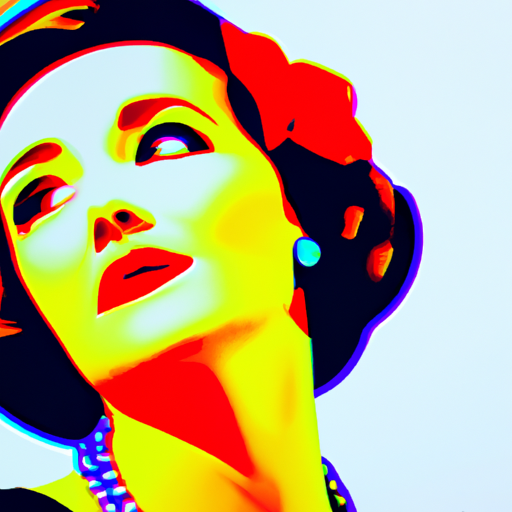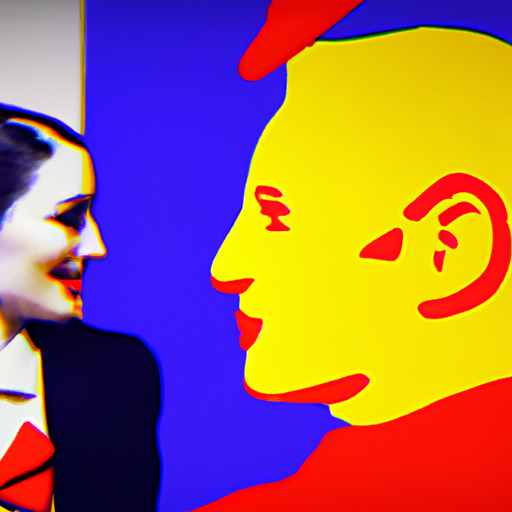
-
Table of Contents
- The Intersection of Animation and Illustration
- The Similarities Between Animation and Illustration
- The Differences Between Animation and Illustration
- The Intersection of Animation and Illustration
- Animated Illustrations
- Illustrative Animation
- Animated Infographics and Explainer Videos
- The Benefits of Combining Animation and Illustration
- Conclusion
The Intersection of Animation and Illustration

Animation and illustration are two distinct art forms that have long been intertwined. Both mediums have the power to captivate audiences, tell stories, and evoke emotions. In recent years, the line between animation and illustration has become increasingly blurred, with artists and animators exploring new ways to combine the two. This article will delve into the intersection of animation and illustration, exploring the similarities, differences, and the exciting possibilities that arise when these two art forms collide.
The Similarities Between Animation and Illustration
While animation and illustration are distinct art forms, they share several similarities:
- Visual storytelling: Both animation and illustration are powerful tools for visual storytelling. They allow artists to convey complex narratives, emotions, and ideas through visuals alone.
- Imagination and creativity: Both animation and illustration require a high level of imagination and creativity. Artists in both fields must bring their ideas to life and create visually compelling and engaging content.
- Attention to detail: Whether it’s a single illustration or a frame in an animated sequence, attention to detail is crucial. Both animation and illustration require precision and meticulousness to create visually stunning and impactful work.
- Artistic expression: Both animation and illustration provide artists with a platform for self-expression. Artists can use their unique styles and techniques to convey their thoughts, feelings, and perspectives.
The Differences Between Animation and Illustration
While animation and illustration share similarities, they also have distinct differences:
- Motion: The most obvious difference between animation and illustration is motion. Animation brings static images to life through movement, while illustration focuses on creating compelling still images.
- Time and duration: Animation is a time-based medium, where a series of images are presented in rapid succession to create the illusion of movement. Illustration, on the other hand, is a static medium that captures a single moment in time.
- Medium: Animation is typically created using digital software or traditional techniques like hand-drawn animation or stop motion. Illustration, on the other hand, can be created using various mediums such as pen and ink, watercolor, digital tools, and more.
- Collaboration: Animation often involves a team of artists, including animators, storyboard artists, sound designers, and more. Illustration, on the other hand, is often a solitary pursuit, with artists working independently.
The Intersection of Animation and Illustration
As technology advances and artists push the boundaries of their respective fields, the intersection of animation and illustration has become increasingly prevalent. Here are some exciting ways in which these two art forms collide:
Animated Illustrations
Animated illustrations combine the static nature of illustration with the motion of animation. Artists can bring their illustrations to life by adding subtle movements, such as a flickering flame or a swaying tree branch. This technique adds an extra layer of depth and engagement to the artwork, making it more immersive for the viewer.
For example, the artist Pascal Campion creates animated illustrations that evoke a sense of nostalgia and emotion. His illustrations often depict everyday moments, such as a family gathering or a quiet evening at home. By animating certain elements within his illustrations, Campion adds a touch of magic and brings his scenes to life.
Illustrative Animation
Illustrative animation combines the storytelling power of animation with the artistic style and techniques of illustration. This approach allows animators to create visually stunning and unique animations that stand out from traditional animation styles.
A notable example of illustrative animation is the work of Studio Ghibli, a renowned Japanese animation studio. Their films, such as “Spirited Away” and “My Neighbor Totoro,” feature beautifully hand-drawn animations that resemble illustrations come to life. The intricate details, vibrant colors, and unique character designs make Studio Ghibli’s animations a visual feast for the eyes.
Animated Infographics and Explainer Videos
Infographics and explainer videos are popular tools for conveying complex information in a visually appealing and easily understandable way. By combining animation and illustration, these videos can become even more engaging and effective.
For instance, the TED-Ed YouTube channel produces animated educational videos that explain various topics, from science to history. These videos use a combination of animation and illustration to simplify complex concepts and make them accessible to a wide audience. The visuals help viewers grasp the information more easily and retain it for longer.
The Benefits of Combining Animation and Illustration
The intersection of animation and illustration offers several benefits:
- Enhanced storytelling: By combining animation and illustration, artists can create more immersive and captivating stories. The addition of motion and subtle animations can evoke emotions and bring the narrative to life.
- Increased engagement: Animated illustrations and illustrative animations can capture the viewer’s attention and keep them engaged for longer. The combination of visual elements and movement creates a dynamic viewing experience.
- Unique visual style: The combination of animation and illustration allows artists to develop a unique visual style that stands out from traditional animation techniques. This can help artists differentiate themselves in a crowded market and attract a wider audience.
- Effective communication: Animated infographics and explainer videos can simplify complex information and make it more accessible. The combination of animation and illustration helps viewers understand and retain the information more effectively.
Conclusion
The intersection of animation and illustration opens up a world of possibilities for artists and animators. By combining the strengths of both mediums, artists can create visually stunning and engaging content that captivates audiences. Whether it’s through animated illustrations, illustrative animations, or animated infographics, the fusion of animation and illustration offers a unique and powerful way to tell stories, convey ideas, and evoke emotions. As technology continues to advance, we can expect to see even more exciting collaborations between these two art forms in the future.
